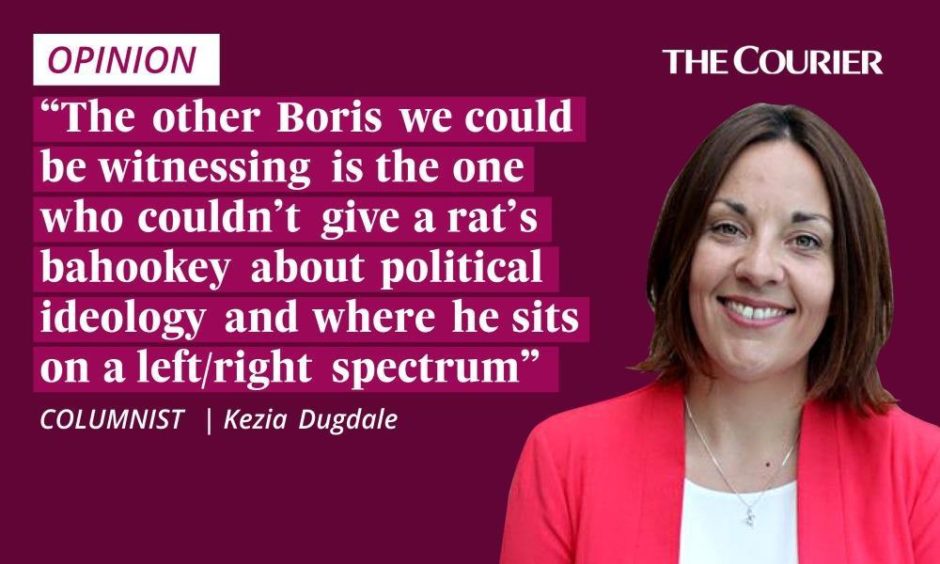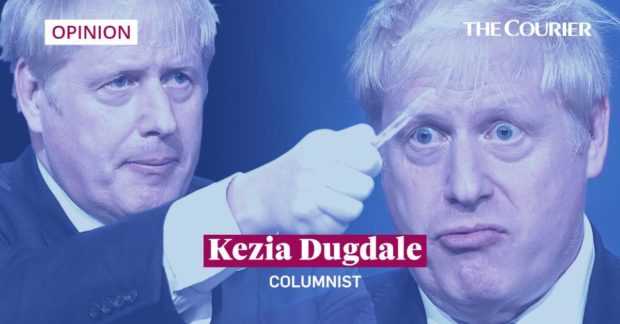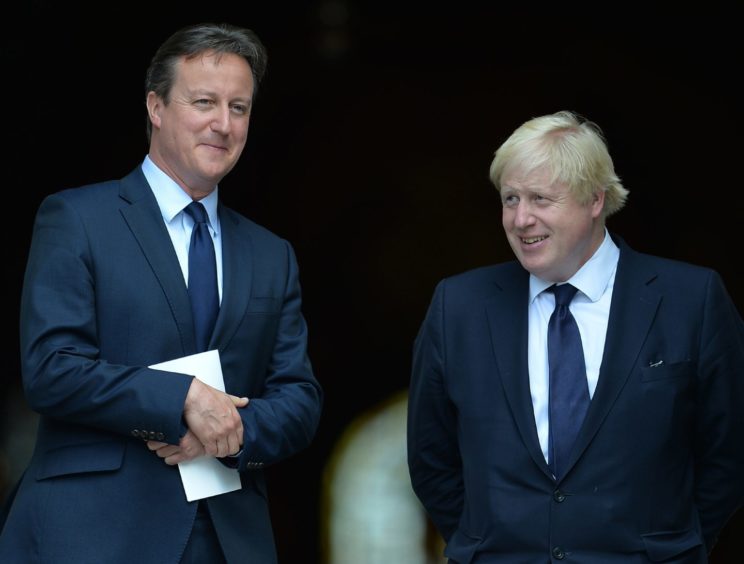Boris Johnson made it clear that proper politics are back this week – with a thud.
It comes after the best (or more aptly worst) part of 18 months when traditional party politics were largely suspended because of the Covid-19 national emergency.
As much as opposition leaders might quibble with a restriction here, or support for business package there, we saw a largely unified front from politicians in response to the immensity of the challenge we faced.
It was a real ideology buster too.
At the 2019 general election Boris Johnson resoundingly beat Jeremy Corbyn’s socialist manifesto in every corner of the country.
So it’s nothing short of mind boggling to consider Johnson’s Chancellor would outspend and out borrow John McDonnell’s ambitious plans.

Or that his Tories would essentially nationalise whole industries and sectors with the furlough scheme.
And that’s despite condemning Labour’s plans to do it with something as meagre as the railways just a few months before.
This ideological shape shifting looks set to last long in to the future now the UK Tories have announced their long awaited plans to reform social care in England.
It involves a tax rise for all of us.
And it’s the first real indicator of who Boris Johnson is and what he represents in Number 10 that we’ve seen beyond Brexit and Covid-19.
Two sides to Boris Johnson
To my eyes there is one of two potential characters before us.
The first is a PM who is redefining what it means to be a 21st century one-nation conservative.
Building on his constituency wins across the red wall in the North of England, he is presenting a brand of conservatism which is economically left of centre.
It’s one that is completely comfortably with taxing to spend on public services and the NHS in particular.
He’s a bit of a lefty, at least in Tory towers, on the economy.
But he keeps his kin with him by being very firmly to right on social issues like the so called culture wars.
Hard right on immigration is a particular characteristic.
It’s a very different form of conservatism to the one offered by David Cameron which preferred to be low tax and pro business but at peace with social progress, not least around gay marriage.
The other Boris we could be witnessing is the one who couldn’t give a rat’s bahookey about political ideology and where he sits on a left/right spectrum.
This is the Boris who is far more interested in his legacy.
I suspect it’s this latter character we’re being presented with now.
And what he wants to be remembered for is a) winning big and b) being the first prime minister to really fix one of the big social challenges of our time – how we care for our ageing population.
Old age isn’t what it used to be
When Bismarck introduced the first pension in Germany in 1889, the age was set at 70 and people were expected to draw it down for a maximum of seven years before popping their clogs.
Now people retire in their 60s. But they still expect to live well and relatively healthily for another 20 years, dependent on their postcode of course.
There are more of them and as they deteriorate gently, its putting huge pressure on the NHS.
Which let’s remember, was designed to fight disease not old age.
The Prime Minister deserves some credit for taking the issue out of the box marked “too difficult” and facing the challenge head on.
Even so, you’ll struggle to find many endorsers for his plans.
We will do what is right, reasonable and fair, we’ll make up the COVID backlogs, we’ll fund more nurses and, I hope, we will remove the anxiety of millions of families up and down the land by taking forward reforms that have been delayed for far too long. pic.twitter.com/cwHWM95IVz
— Boris Johnson (@BorisJohnson) September 8, 2021
That’s because it involves a whopping tax rise on all of us – starting with a 1.25% increase in National Insurance for employees and employers.
All the evidence tells us the public don’t like tax increases – funny that. But they will accept them if it’s clear what it’s for.
Targeting National Insurance makes perfect sense in that context.
It’s an easy argument to say we’re putting up NI to support the NHS post pandemic.
The problem with using NI to raise the money is that it’s regressive. The less you earn, the greater percentage of your income goes out in contributions.
It also kicks in at lower threshold than income tax. So the tax burden on low paid part-time workers is greater.
Boris Johnson's tax rise means a landlord who owns and rents out dozens of properties won’t pay a penny more, but the tenants working in full-time jobs will.
They are hitting young and low-paid workers while leaving the wealthy untouched.
11 years of Tory unfairness continues.
— Keir Starmer (@Keir_Starmer) September 7, 2021
Your average care worker will see their tax bill, as a percentage of income, go up more than mine.
That’s a bold and courageous strategy for a PM who clapped for frontline workers.
Except for voters in Scotland
Of course health and social care are responsibilities for the Scottish Parliament, National insurance is not.
So Boris’s UK levy will bring substantial new funds for Scottish Ministers to spend without them carrying the political baggage of hiking taxes to do it.
Inevitably it will fall down constitutional lines in Scotland too, because sadly, everything just does.
Unionists will point to the fact that Scotland will likely get more than its population share of the cash. That’s because the average salary is higher in England than it is in Scotland.
Nationalists will decry that it’s low waged Scots subsidising the social care of wealth English landowners.
Perhaps both are right.
Yes, proper politics are back.
Choices are being made, principles lauded and abandoned. But don’t be too surprised if the arguments are the same as before.
Even if ideology is out the window.











